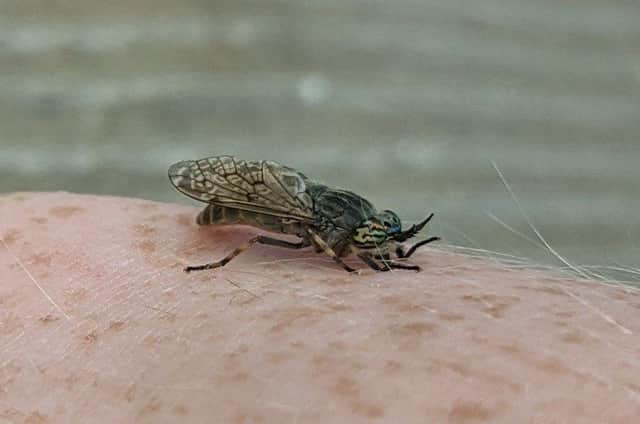Horsefly bites can be painful and become infected: what to look out for and when to seek medical advice


The UK’s week-long heatwave might mean sunshine, ice cream and work-from-garden (a nice break from WFH) but it has also meant an increase in bugs.
The hot, dry temperature are perfect conditions for horseflies, which are commonly found in grassy areas, woodlands, ponds and pools.
Advertisement
Hide AdAdvertisement
Hide AdThese type of flies are larger than the ordinary house fly and can leave painful bites which are hard to go unnoticed.
So, with horsefly season firmly upon us - what do they look like and how would you know if you’ve been bitten? This is everything you need to know.
What do horseflies look like?
Horseflies, commonly referred to as clegs, are about 1-2.5cm in size and notably larger than common flies we might see in our homes and gardens.
They are dark and can often have striped bodies, their greyish-black colour allows them to blend in with the outdoors.
Advertisement
Hide AdAdvertisement
Hide AdHorseflies are most commonly found around farm animals such as cattle, as well as in sheds, pools, pongs, grassy and wooded areas.
Are horseflies dangerous?
Female horseflies are particularly dangerous as their razor sharp teeth can leave a nasty bite which is red and painful.
They have specially adapted teeth to slash skin which makes them more vulnerable to becoming infected, as they open the skin rather than pricking it.
Severe reactions can also lead to hospitalisation, as some people are allergic to the insects.
Advertisement
Hide AdAdvertisement
Hide AdThe red, itchy sores can be difficult not to scratch and this makes them easily infected. Infections can lead to the spot feeling hot, and you could become weak and nauseous
Some people can suffer an allergic reaction - if this is the case then symptoms to look out for are dizziness, wheezing, difficulty breathing, a blotchy skin rash and severe swelling that may be visible in your lips or tongue.
If you have an infected cleg bite, contact your GP and if you think you have taken an allergic reaction, seek medical help immediately.
How to treat a horsefly bite
If you have been bitten, do not scratch the bite, even if it is itchy.
Advertisement
Hide AdAdvertisement
Hide AdDo not apply any chemical hygiene or cleaning products as this could make an infection worse or exacerbate the itchiness.
Instead, use cold water and soap and clean around the bite. Then use a cold compress to reduce any swelling and numb the area.
If the bite does not reduce in size over the course of a few days, or if it gets worse, contact your doctor.